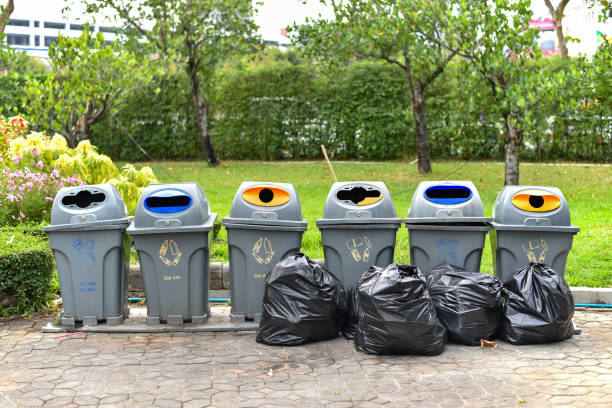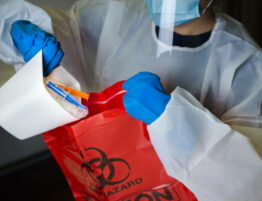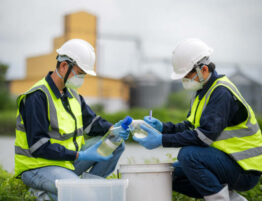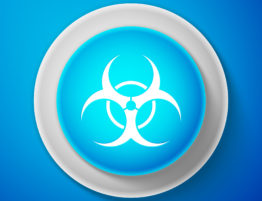
Waste management is becoming a more pressing concern in today’s globe. The garbage generated has increased to previously unheard-of proportions due to industrialization and expanding populations, which presents severe obstacles to sustainability initiatives, public health, and the environment. It’s critical to comprehend the several forms of garbage and their unique qualities to solve these issues.
7 main types of Waste
This article will examine the 7 main types of Waste and go over sustainable waste management techniques.
- Municipal Solid Waste (MSW)
Municipal Solid Waste (MSW) is a complicated blend of materials homes, businesses, and organizations produce. It is one of the 7 main types of Waste. It includes large, heavy goods like furniture and appliances and easily identifiable materials like paper, plastics, and food waste. Various factors, including population density, socioeconomic level, and cultural behaviors, can significantly affect the makeup of MSW. Integrated strategies involving trash reduction, source separation, recycling, composting, and environmentally friendly disposal techniques like landfilling waste-to-energy incineration are necessary to manage municipal solid Waste (MSW) efficiently. Campaigns for public awareness and educational programs are essential for advancing ethical waste management techniques and motivating customers and companies to alter their behavior.
MSW is the wide range of everyday goods that individuals, companies, and organizations throw away. Hazardous commodities like batteries and fluorescent light bulbs are included in MSW, in addition to considerable, bulky objects like appliances and furniture. Globally, there are differences in MSW management systems; some places prioritize landfilling, while others emphasize recycling and waste-to-energy technology. Cultural, economic, and geographic variables can affect the content of MSW, which can impact waste management plans and infrastructure construction.
- Hazardous Waste
Hazardous Waste is toxic, ignited, corrosive, or reactive, which puts ecosystems, human health, and the environment in grave danger. This category includes various products, such as batteries, electrical devices, insecticides, solvents, industrial chemicals, and medications. To avoid contaminating the land, water, or air, hazardous Waste must be handled, stored, transported, treated, and disposed of properly. Hazardous waste management is governed by regulatory frameworks, such as the Resource Conservation and Recovery Act (RCRA) in the United States, to guarantee adherence to safety regulations and environmental protection criteria.
A wide range of substances that have the potential to be harmful to both the environment and human health are included in the category of hazardous Waste. Industrial chemicals, paints, solvents, medications, and electronic gadgets with hazardous parts fall under this category. Because of its classification, management specifications, and disposal laws, hazardous Waste presents particular difficulties. Hazardous waste generators must follow strict labeling, storage, transportation, and treatment requirements to reduce dangers and avoid contaminating the environment. Additionally, the safe disposal and cleanup of hazardous waste sites require specialized facilities outfitted with cutting-edge technologies.
Like the main types of waste, you may also like to read about the examples of Biomedical Waste.
- Biomedical Waste
Medical clinics, research labs, and healthcare facilities are the primary sources of biomedical Waste, sometimes called healthcare trash or medical garbage. It contains potentially contagious items, including discarded surgical supplies, blood-soaked bandages, needles, and used syringes. Because biomedical Waste can spread diseases, such as bacteria, viruses, and other germs, there is a risk to human health. Strict guidelines are followed during the packaging, disposal, and segregation of biomedical Waste to reduce exposure and stop the spread of illnesses. Before being disposed of permanently, biomedical Waste is treated using techniques like autoclaving, burning, or chemical disinfection to make it non-infectious.
Because biomedical Waste comes from hospitals, clinics, and research institutes, particular concerns are involved. Sharps, tainted equipment, and out-of-date medications are examples of biomedical Waste, in addition to infectious materials like blood, tissues, and bodily fluids. Handling biomedical Waste presents occupational hazards for healthcare personnel, necessitating appropriate training, personal protective equipment (PPE), and adherence to infection control procedures. Healthcare institutions use waste segregation, autoclaving, or high-temperature incineration in addition to complying with regulations to reduce dangers and guarantee public safety.
- Electronic Waste (E-Waste)
Electronic garbage, often known as e-waste, comprises outdated or discarded appliances and electronics. These include everything from industrial and medical equipment to consumer gadgets like computers, smartphones, and televisions. In addition to toxic materials like lead, mercury, and brominated flame retardants, e-waste also contains valuable materials, including rare earth elements (neodymium, tantalum), base metals (copper, aluminum), and precious metals (gold, silver). Recovering valuable resources, preventing environmental contamination, and minimizing health concerns linked with harmful components depend on recycling and responsible disposal of e-waste. Initiatives for managing e-waste concentrate on gathering, disassembling, recycling, and appropriately handling dangerous materials to optimize resource recovery and reduce environmental effects. E-waste is one of the main types of Waste.
- Construction or Demolition Waste
Materials produced by building, remodeling, and demolition operations, such as concrete, bricks, wood, metals, asphalt, plastics, and insulating materials, are all included in the construction and demolition (C&D) waste category. Because of its mass and heterogeneity, construction and demolition (C&D) waste constitutes a sizable component of the overall waste stream and offers disposal issues. Deconstruction, rescuing usable materials, and recycling inert components are examples of sustainable methods that can lessen the environmental impact of construction and demolition waste while preserving resources and lowering the need for landfills. Cutting-edge innovations that facilitate the effective management and recycling of construction site construction and demolition debris, such as mobile crushing equipment and on-site processing facilities, support sustainable development and the circular economy.
- Industrial Waste
Industrial Waste comprises a variety of pollutants, byproducts, and residues produced throughout the manufacturing, chemical, mining, and energy production processes. Depending on the type of industrial activity, solid Waste, liquid effluents, gasses, and hazardous compounds can all be considered industrial waste streams. Managing industrial Waste should prioritize pollution avoidance, minimization, and resource efficiency to minimize environmental consequences and adhere to regulatory requirements. To ensure environmental protection and sustainability, advanced treatment technologies treat industrial emissions and effluents before discharge or reuse, including chemical precipitation, thermal processes, and biological treatment.
- Organic Waste
Biodegradable items from plants or animals, such as food scraps, yard waste, agricultural residues, and sewage sludge, are grouped as organic Waste. Methane, a potent greenhouse gas that contributes to climate change when released into the atmosphere, is produced during the breakdown of organic Waste. Composting, anaerobic digestion, and vermicomposting are examples of sustainable management techniques that can keep organic Waste out of landfills, lower methane emissions, and provide renewable energy and valuable soil nutrients. Innovative technologies, decentralized digestion facilities, and community-based composting programs provide scalable solutions for organic waste management that support resource conservation and the circular economy.
Conclusion
The above are the 7 main types of Waste. Stakeholders may decrease waste generation, improve resource recovery, and safeguard the environment and public health by implementing targeted interventions based on their understanding of the characteristics, sources, and management strategies associated with each form of trash. Collaboration between governments, companies, communities, and individuals is crucial to accomplish sustainable waste management





